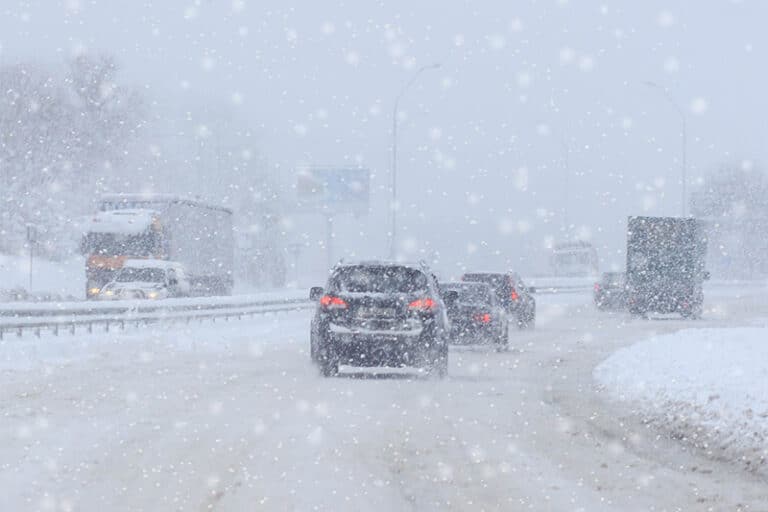Winter weather can be unpredictable and dangerous, particularly for drivers. The U.S. Department of Transportation estimates icy/snowy roads and driving in snow or sleet account for 36 percent of all traffic accidents, killing approximately 2,200 people yearly. When driving in winter weather, you may experience a variety of hazards, including snow, sleet, freezing rain, and fog. Knowing how to handle each type of weather is essential for staying safe on the road. Let’s look at how different types of winter weather can cause hazardous conditions and what you can do to stay safe.
Snow
Snow is one of the most common types of winter weather that drivers face during the colder months. It can pile up quickly and make roads slick, which increases the risk of sliding or skidding out of control. To drive safely in the snow, you should slow down significantly. Try to leave extra room between cars so you have plenty of room to react if something unexpected happens. In preparation for snowy conditions, make sure to get your tires checked periodically and your wiper blades to ensure everything is in good condition.
Sleet
Sleet occurs when the air aloft is above freezing while air at the surface is below 32 degrees Fahrenheit. Liquid precipitation falls through the atmosphere and freezes before reaching the ground. Sleet creates slick surfaces similar to ice, making it difficult for vehicles to brake or accelerate quickly. As with snow, you should reduce your speed significantly and increase your following distance to drive safely in sleet. Stay aware as you drive–sleet can be deceiving. It can make you think you have traction, then suddenly causing you to have none.
Freezing Rain
As with sleet, freezing rain occurs when the air above ground is warmer than the air at the surface, causing liquid rain to fall from the sky and freeze as ice when it hits cold surfaces. Freezing rain is perhaps the most dangerous winter precipitation. It causes sheets of “black ice” to form on the roads, and you can find yourself driving on ice without realizing it. It only takes a thin layer of ice on a roadway to cause your car to lose traction. Use extreme caution in freezing rain conditions, driving slowly, making slow turns, and avoid slamming on your brakes. If you start sliding, the best way to regain traction is to take your feet off the brake and the accelerator and let your tires regain traction. (Better yet– stay home if possible. Freezing rain is exceptionally dangerous.)
Fog
Fog forms when water vapor condenses into tiny droplets suspended in the air close to ground level. It limits visibility significantly and makes it difficult for drivers to see what’s ahead on the road. If fog occurs when the air is below freezing, it creates the additional danger of “ice fog,” which can freeze on surfaces like freezing rain. To drive safely in foggy conditions, use your headlights (but not high beams) so that other drivers can see you better, increase your following distance, and drive slowly enough to stop easily if an obstacle appears in your path through the fog.
Despite your best efforts to drive safely in winter weather, you can’t predict whether other drivers will do the same. If you’re in an injury accident in winter weather, our experienced attorneys can help you receive the compensation you deserve. Call our offices to schedule a consultation.







